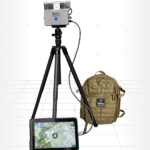Officials are ready to proceed with the second phase of sea testing on its San Antonio-class (LPD-17) amphibious ships, after successfully wrapping up the first half of those sea trials yesterday. Speaking from on board the San Antonio, the ship’s commanding officer, Cmdr. Thomas Kait, told reporters that aside from some minor tweaks to the vessel’s engines, the first phase went off without a hitch. Aside from the engine, tests were also run on the ship’s electrical, navigation and…
Contract Updates
UPDATE: Eagle Safe Surfaces Colorado Inc. (Englewood, Colorado (SPE8EC-26-D-0006) – $139,000,000),
UPDATE: Eagle Safe Surfaces Colorado Inc.,* Englewood, Colorado (SPE8EC-26-D-0006, $139,000,000), has been added as an awardee to the multiple award contract for snow removal equipment, issued against solicitation SPE8EC-21-R-0008 and awarded Jan. 20, 2023. The contracting activity is Defense Logistics…
AvKARE LLC (Pulaski, Tennessee) – $12,915,328
AvKARE LLC, Pulaski, Tennessee, has been awarded an estimated $12,915,328 firm-fixed-price requirements contract for telmisartan tablets. This was a competitive acquisition with nine responses received. This is a one-year base contract with four one-year option periods. Locations of performance are…
Bernard Cap LLC (Hialeah, Florida) – $18,857,146
Bernard Cap LLC,* Hialeah, Florida, has been awarded a maximum $18,857,146 firm-fixed-price, indefinite-delivery/indefinite-quantity contract for green service uniform garrison caps. This was a competitive acquisition with six responses received. This is a five-year contract with no option periods. The ordering…
Science Applications International Corp. (Reston, Virginia) – $26,253,706
Science Applications International Corp., Reston, Virginia, has been awarded a $26,253,706 cost-plus-fixed-fee contract in support of Air Force modeling simulation sustainment support. The Air Force modeling and simulation services support (AFMS3) contract provides comprehensive support to the Department of the…













